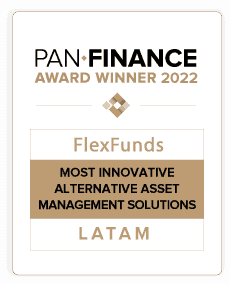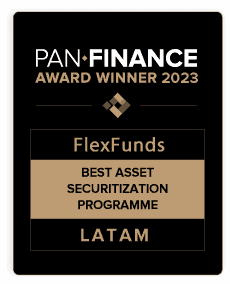Real Estate Investment Trusts (Fibras) are an instrument that has fixed and variable income characteristics to invest in the real estate sector but without the need to directly purchase a real estate property. These types of trusts have different ways of paying rent or dividends to their investors. Below, FlexFunds explains what they are:
The “Fibras” are instruments listed on the stock exchange and launched to promote the acquisition or development of real estate projects in the residential or commercial field, generating liquidity for investors through the rents from leasing or the capital gains obtained.
These vehicles offer exposure to the real estate market without having to invest directly in it; a credit institution manages them and, following current regulations, must distribute between 90% (in the U.S.) and 95% (in countries such as Mexico) of their pre-tax profits -calculated by the tax authorities- after one year.
In practical terms, investors acquire a type of equity security known as Certificados Bursátiles Fiduciarios Inmobiliarios (CBFI), which give the holder a guarantee and the right to receive the distributions or rents, that correspond to that fraction of the property.
The “Fibras”, in turn, group this capital from various investors and, with these resources, operate in real estate, either in apartment complexes, hotels, or shopping malls, among others. Their U.S. peers, known as Real Estate Investment Trusts (Reits), must invest 75% of their income in real estate. In addition, an equal percentage of their income must come from the rent or sale of these assets.
But how do “Fibras” pay rent or dividends?
In the real estate trust business, there are equity trusts, which invest directly in real estate and obtain returns derived from rent, sale, or the generation of dividends. Some invest in mortgages and obtain interest from these operations. And thirdly, there are hybrids, which combine aspects of both and try to generate returns by applying mixed strategies.
Real estate trusts, or “Fibras”, can generate payments through their taxable result after making collections from capital gains and applying discounts to the related expenses for their operation.
In this case, the “Fibras” generated payments to the holders of Certificados Bursátiles Fiduciarios Fiduciarios Inmobiliarios (CBFI), which usually translates into constant income for investors. However, the broker generally retains 30% of the amount distributed for taxes.
Investors can also receive their payment by reimbursing capital generated through so-called artificial losses in the trust, which is tax-exempt. In order to make this payment, “Fibras” appeal to an accounting concept known as depreciation, which refers to the loss of value of a set of assets over time.
The depreciation of the “Fibras” refers to the wear and tear of real estate over its useful life, even if this is much longer than that of other types of assets, such as technology assets (cell phones, computers, and other devices that lose value over time). In any case, this is considered an outflow of funds (expenditure), and therefore it is feasible to subtract it from your income for tax purposes.
For tax purposes, purchasing former real estate can be deducted from your profits as expenses. Hence, the 95% that these trusts can pay out of their profits is due to this series of deductions (between actual and assumed expenses) and their income. For this reason, and given the complexity of their structure, we do not speak of profits but of Funds from Operations (FFO).
Shareholders may receive reimbursement of all the money generated by the “Fibras” in tax efficiencies depending on the trust’s performance. The technical committee will decide on how to make such distributions.
Likewise, within the business, payments can also be made using currency fractions or CBFIs of a given property. This operation is tax-exempt under certain conditions imposed by the financial authorities in each market, such as the certificate having liquidity.
The important point is that, unlike traditional shares, the price of CBFIs maintains its value after paying income to investors. In contrast, the payment of dividends on stock market securities produces an outflow of money from the company, which generally causes the stock to fall. Against this backdrop, “Fibras” are an alternative to entering into real estate investments at lower costs, with tax benefits and diversification; however, they do not shield against market volatility and high administrative costs. Before investing in these instruments, it is essential to seek advice, understand the model in depth, and level the risks when the real estate industry faces turbulence amidst the winds of global recession and the impact on the dynamics of buying and selling. Therefore, it is best to analyze the market and make decisions based on the current reality of the economy, weighing the pros and cons of each instrument.







